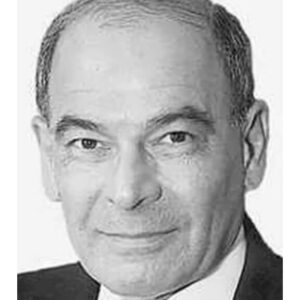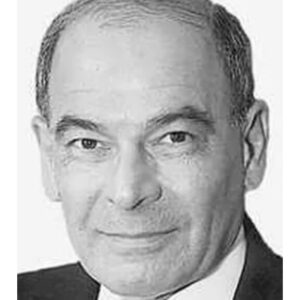Frank DeFilippo: Who Will Have a Big Say in November’s Election?
There are 1.709 million reasons why Democrats should be concerned as they mobilize for the November general election. That’s the combined number of Republicans and unaffiliated (or independent) voters there are in Maryland right now, and the books are open for changes through Oct. 16 – if the Motor Vehicle Administration gets off its keister.
These latest available numbers show that Republican and independent registrations are steadily increasing while Democrats have flatlined, though still very much the majority party in Maryland. The increases can reflect a couple of noteworthy pathologies – disenchantment with both major parties on the one hand, or a primal instinct to align with the party in power on the other.

Frank A. DeFilippo
We also now know that the primary election voter turnout was a middling 25 percent, not very impressive for a contested seven-way race yet several points ahead of some previous elections when turnout was below 20 percent. The total voter registration in Maryland is 3.9 million. It is now acknowledged that the MVA screw-up may have helped to discourage voter turnout. Imagine that!
If an object lesson were needed about the cautionary axiom that every vote counts, consider that several primary contests were decided by as few as two votes – in Harford and Howard counties, by 80 votes in Montgomery, 73 votes in Anne Arundel County and by Johnny Olszewski’s hairbreadth nine-vote margin in Baltimore County, which forced a recount. (The recount concluded Saturday gave Olszewski a victory by 17 votes.)
An often-overlooked fact of Maryland politics is that Republicans usually don’t bother to vote in large numbers in primary elections because they rarely have challenges at the top of the ticket, but they do turn out heavily for general elections. A total of 211,000 Republicans (about 20 percent of GOP voters) voted for governor. Thus, there are more than one million Republicans ready to spring in the general, a number that’s risen steadily over the last few years and finally topped a million a year or so ago.
Every political hobbyist knows that independents are the fastest growing political cohort in America, though many that take the plunge don’t realize that in many states, notably Maryland, they surrender their primary election voting franchise by doing so – another unknown factor in the general election calculus.
So, the composite figure of 1.709 million voters is creeping up on the Democrats’ majority registration of 2.1 million, which hasn’t budged in several years. Lumping the two voting groups together mathematically is not meant to conflate them into a single voting bloc, either ideologically or numerically. It is intended only to illustrate the power of numbers that are uncertain.
Most political wiseguys agree that Baltimore County is the fulcrum on which the election for governor turns. Republican Gov. Larry Hogan carried the county in 2014, and Democrat Martin O’Malley defeated Republican Robert L. Ehrlich Jr. in his home county twice.
There are 307,000 registered Democrats in Baltimore County who co-exist with 142,000 Republicans and 92,000 independents. The numbers are not a reliable guide to results. From Towson at the center, heading east to Dundalk and Essex, the county tends to vote Republican though much of that territory is nominally Democrat. Towson, of course, is a Republican warren, while the county, to the west, is Democratic with a solid black presence.
Montgomery County, another important component of the electoral algorithm, is often described as liberal and Democratic when, in fact, the county is more of a good-government bastion than a liberal hothouse. There are 381,000 registered Democrats in MoCo, but at the same time there are 114,000 Republicans and 143,000 unaffiliated voters – a grand total of 257,000 voters outside the Democratic motherlode.
The ebony and ivory match-up between Hogan and Democrat Ben Jealous, the former NAACP chief, will be decided, of course, by voter turnout as elections have been since the golden age of Democracy in ancient Greece and Rome. The founding philosophers beat the shrubbery around the Acropolis and the Coliseum to flush out eligible voters.
But at another level, the election is a competition for control of the state’s agenda and its $44 billion budget. It’s a multi-billion showdown between two constituencies – those who approve of the steady pay-as-you-go, business-like approach of Hogan and those who want to shift the direction of government spending to the agenda of service labor unions and, let’s face it, the NAACP, and the semi-socialist Sen. Bernie Sanders and his political progeny, Jealous, as the election is being framed.
Hogan has been tinkering with the state’s piggy bank around the margins, holding back where Democrats in the General Assembly have failed to block him, cutting fees and reducing tolls.
Jealous, by contrast, makes no bones about being a big spender. He has already said that the programs he advocates will cost money and higher taxes. They include the Democratic – now called progressive – litany of free college tuition, de-populating prisons, a $15 minimum wage and universal health care – all desirable in full measure and already partially underway in a state that provides generous benefits and services to its constituents.
Jealous has laid out how he would fund the programs he’s proposing through a combination of existing revenue sources, anticipated spending and new taxes on the wealthiest 1 percent, contrary to the misleading TV commercial sponsored by the Republican Governors Association.
Hogan begins the campaign with a solid Republican base that has yet to show its true numbers this year as well as poll numbers that should allow him to sleep soundly each night. Jealous, impressively for a tyro candidate, in a field of seven Democrats that was quickly reduced to two main contenders, won 22 of 24 jurisdictions, though in a voter turnout without much heft. And he did it mainly with the money and legwork of a couple of labor unions who are eager to have government help close the inequality gap, many of whose low-salary workers they represent.
This election season’s primal scream is “suburban moms,” the collective of white, educated, car-pool mothers who feel threatened by Trump administration policies and the direction of the Supreme Court on reproductive rights and other issues that affect women. Democrats are hoping to translate that anger and energy into a massive voter turnout to eject Hogan in 2018 and reject Trump in 2020.
It’s a toothsome twist that suburban moms may have had their origin and the peak of their influence more than a half century ago in Montgomery County. Back in the day, the MoCo men were downtown working at government jobs and were prevented by the Hatch Act from engaging in partisan politics. So, the women of MoCo organized the Women’s Suburban Democratic Club and ran MoCo’s politics, pretty much as they do today.
The vote-pulling power of Hogan’s and Jealous’ agendas will set the aggressive tone and the tactic of contrasts in the election for governor. Those primary stay-at-home Republicans and unpredictable independents will have a big say in who’s the next governor.




 Creative Commons Attribution
Creative Commons Attribution